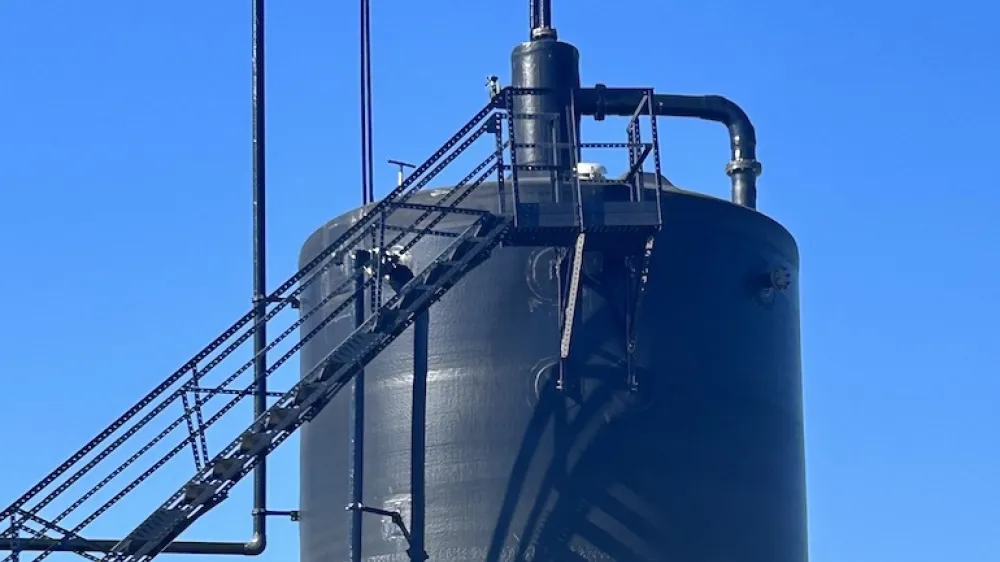
A gun barrel separator is an atmospheric vessel that producers use to separate oil, water, and gas.
Gun barrel separators are also referred to as settling tanks and wash tanks.
How Do Gun Barrel Separators Work?
By the time it reaches the gun barrel the emulsion has typically gone through multiple stages of separation.
Producers use retention time in gun barrels to get rid of the last 2-3% of BS&W before sending it downstream.
Here is the 4-step flow path inside a gun barrel separator:
- Inside the barrel, the fluid enters through an emulsion inlet.
- The mixture now flows downward and discharges under the water level inside the barrel.
- The oil then rises through the water while the water remains in the bottom. This gives the oil-water mixture a very effective "water wash." This means that the water droplets entrained in the oil are more likely to coalesce with the water as the oil moves through.
- Clean oil rises to the oil outlet, where it flows by gravity to the stock tank.
Settling Time and Stream Purity
Unfortunately, there are not significant layers of completely clean oil and free water in the vessel. The top of the oil layer is clean oil, but farther down the layer are more and more water droplets that have not had time to settle out.
The opposite is true of the water layer. Near the top of this layer, some oil droplets remain that have not had time to separate out.
Although the basic purpose of treatment is to produce oil with less than 0.5% water, it is also important not to lose a lot of oil in the outlet water. The goal is for both oil and water outlet streams to be pure.
The purity of each will depend upon the time that each spends in the settling tank.
What Controls a Gun Barrel Separator?
The control point in the gun barrel is at the interface between the oil and the water.
The location of the interface will fix the settling time of each. If the interface level is high, the oil settling time will be less and the water settling time will be more, and vice versa.
The interface level should be set so that the oil purity is near 0.5% BS&W, or whatever the local limit is. This will allow the maximum settling time for the water phase, which means that the oil content of the water will be at a minimum.
The interface level here can be controlled with an adjustable water weir or siphon, which may be adjusted to change the height of the interface level.








































